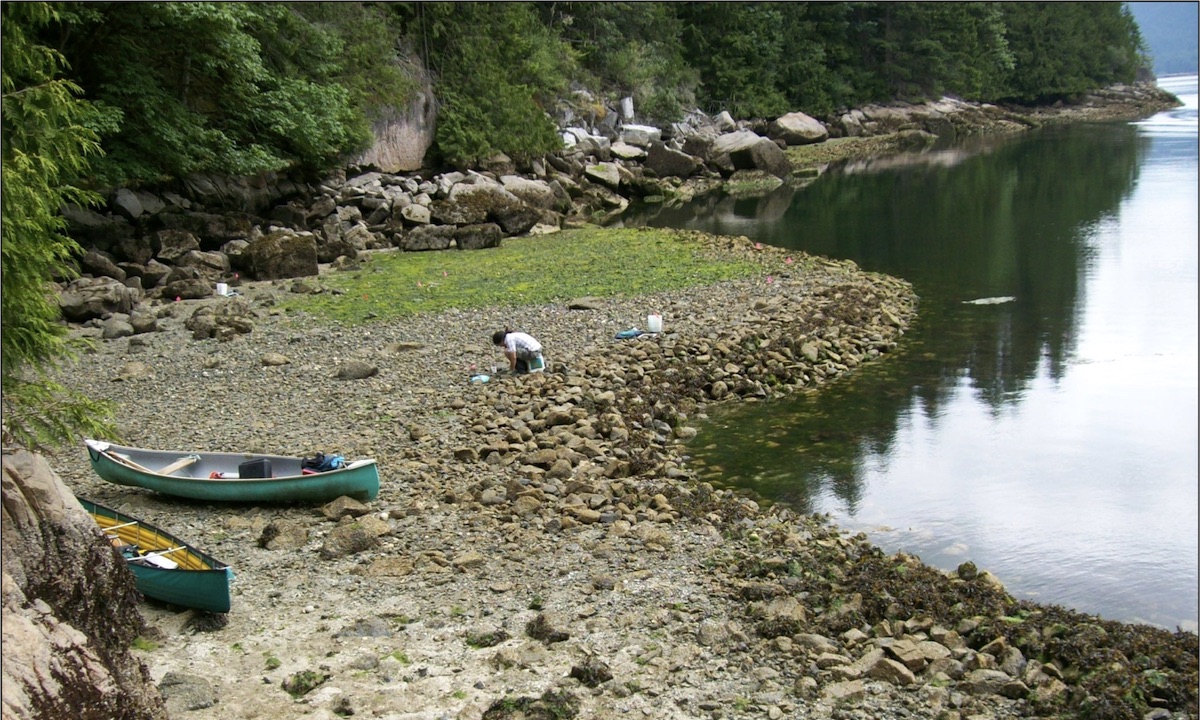Ecological experiments in British Columbia have shown that clam gardens, which involve constructing a rock wall near the low tide line and other beach manipulations, can produce up to a four-fold increase in abundance and nearly double the growth rate of native clam species compared to unmanaged beaches.
Greiner and her colleagues developed a GIS model to map areas of the Swinomish reservation, located on Fidalgo Island, that might be suitable for a clam garden. They looked for beaches with good water quality where clams would be safe to harvest; soft but not too muddy substrate; a good number of juvenile clams; and a strong enough current to provide adequate food and sediment supply.
They also conducted surveys of Swinomish community members to eliminate sites that wouldn’t be appropriate due to historical or cultural significance and got technical advice from British Columbia clam garden researchers and First Nations knowledge holders. This process resulted in a ranked list of 15 potential clam garden sites.
Next, the team will survey Swinomish tribal members about their desires for the clam garden’s purpose – education, ceremonial harvest, a gathering space, or subsistence harvest – and which of the top five sites they prefer. That’s important because clam gardening requires a lot of community participation, Greiner says: Not just building and maintaining the rock wall, but enhancing or amending the substrate of the beach, tilling, harvesting or moving larger clams to provide space for smaller ones to grow in, and removing predators. “You need the human interaction and caring and tending of the garden to promote the optimal conditions,” she says.
The team had planned to conduct its next round of surveys this summer at community events; with those on hold due to the coronavirus pandemic, they’re exploring ways to get input virtually. The results will then be presented to the Swinomish Tribal Senate, which will make the final decision on the clam garden site.
The Fisheries Department also plans a long-term study to see how the chosen beach changes after the clam garden is built and as it matures. As well as monitoring clam populations and beach sediment changes, they want to know if the clam garden could provide resilience to climate change by dampening wave activity or increasing the concentration of broken shell pieces that may lessen ocean acidification in local waters.
Archaeological evidence suggests that clam gardening has been practiced at sites from Alaska to California for at least 1,000 years – and perhaps a lot longer. There is no confirmed evidence of historical clam gardens in Swinomish traditional territories. “But that doesn't mean that that knowledge didn't exist, since we know that there was so much interaction [among Coast Salish groups] when there was no political boundary,” says Greiner.
And the Swinomish project shows that clam gardening isn’t only worthwhile for reviving traditional cultural practices, as important as that goal is. It’s also an indication that Indigenous technologies might have wider use to help address current problems, such as ensuring local food security – which the supply chain disruptions caused by the coronavirus have cast into even sharper relief over the past months, Greiner adds.



